Enhanced situational awareness: taking action to stop outbreaks before they begin in Ethiopia
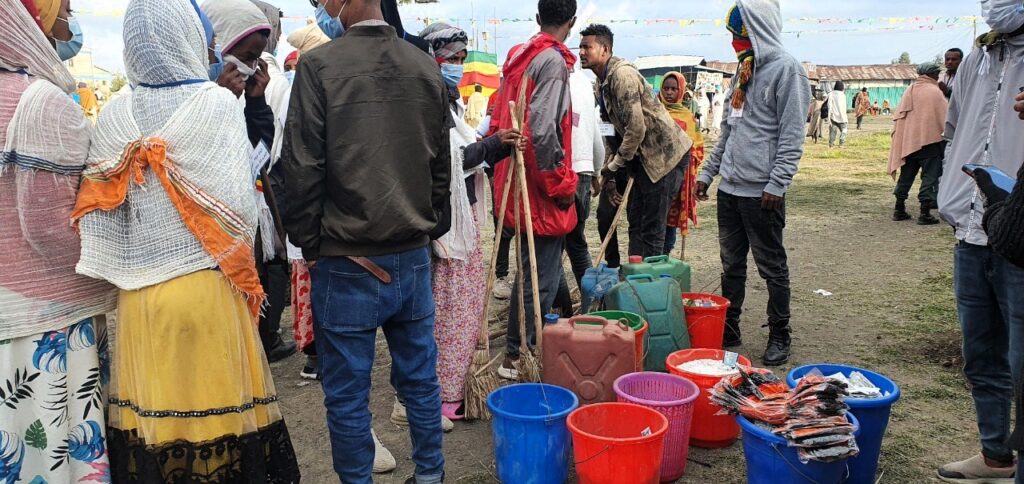
Resolve to Save Lives partnered with the Ethiopian Public Health Institute and local community leaders to prevent a surge in cholera cases during a popular religious holiday.
Using timeliness metrics for household contact tracing and TB preventive therapy
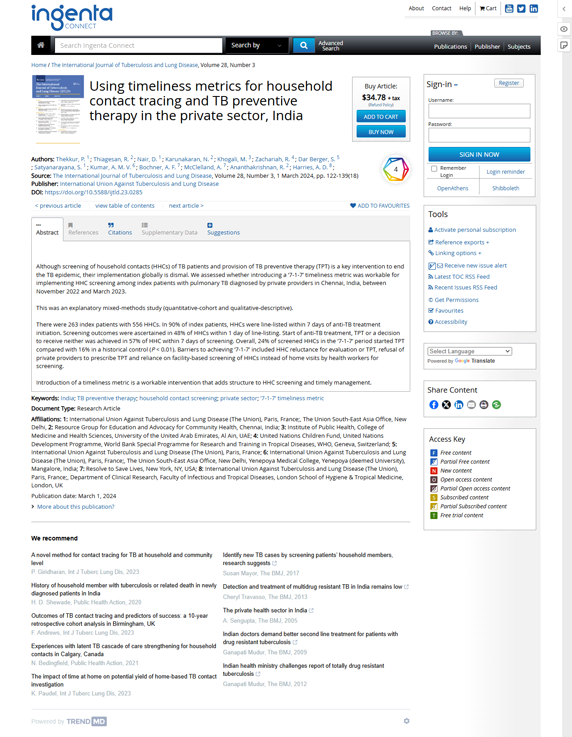
Can 7-1-7 help household contacts of tuberculosis patients get started on preventive therapy? In the International Journal of Tuberculosis and Lung Disease, our colleagues at International Union Against Tuberculosis and Lung Disease used a mixed-methods approach to assess the feasibility of the timeliness metric in the private sector in Chennai, India. Among 263 index patients, […]
Connect, detect, protect, treat: learnings from implementing Epidemic-Ready Primary Health Care
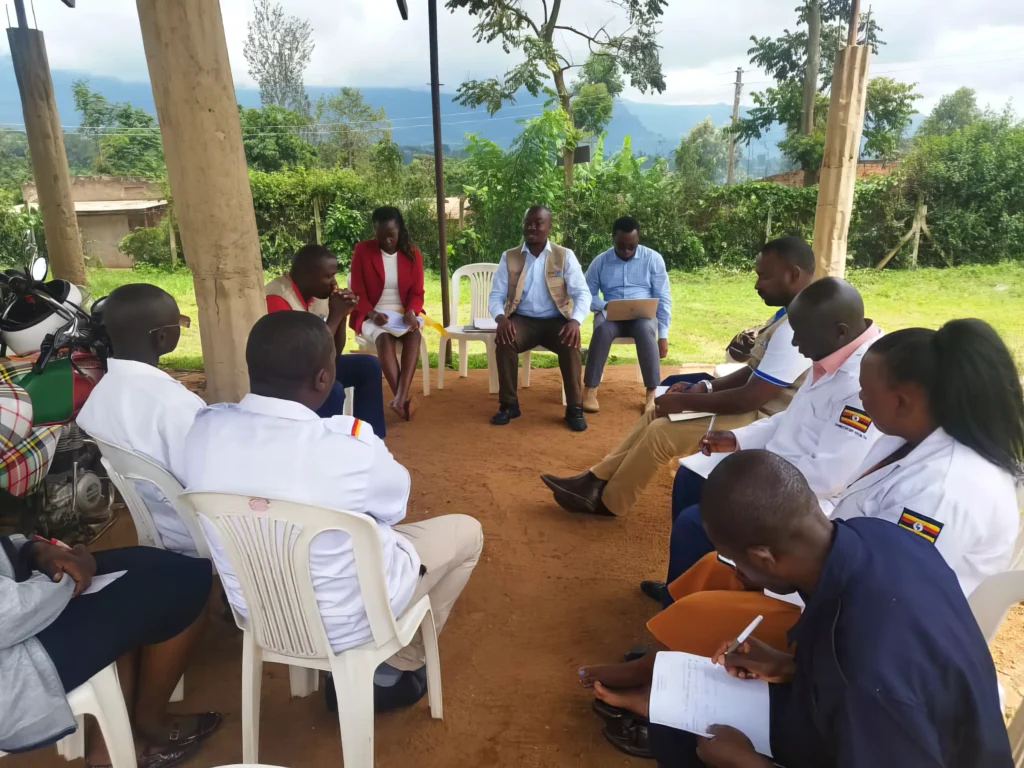
Resolve to Save Lives is partnering with primary health facilities to make sure they’re ready to stop the next epidemic.
7-1-7 helps Kenya quickly contain Rift Valley Fever outbreak

Seasonal heavy rains can spark mosquito-borne infections in livestock and spill over into humans. By applying the 7-1-7 target during a recent outbreak of Rift Valley Fever, Kenya was able to identify barriers to an effective response and quickly get resources to the affected region.
Training health care workers to prevent epidemics—with their smartphones

Resolve to Save Lives partnered with HealthLearn to develop free, mobile-optimized training courses that help frontline health care workers recognize, report and contain infectious disease outbreaks. Recently, one of these training modules was released as a standalone to support Nigeria through a cholera outbreak, allowing frontline workers to more effectively identify and report suspected cases […]
Training health care workers to prevent epidemics—with their smartphones

Resolve to Save Lives and our partners at HealthLearn developed free, mobile-optimized training courses that help frontline health care workers recognize, report and contain infectious disease outbreaks.
7-1-7: rapid improvement for early disease detection and response
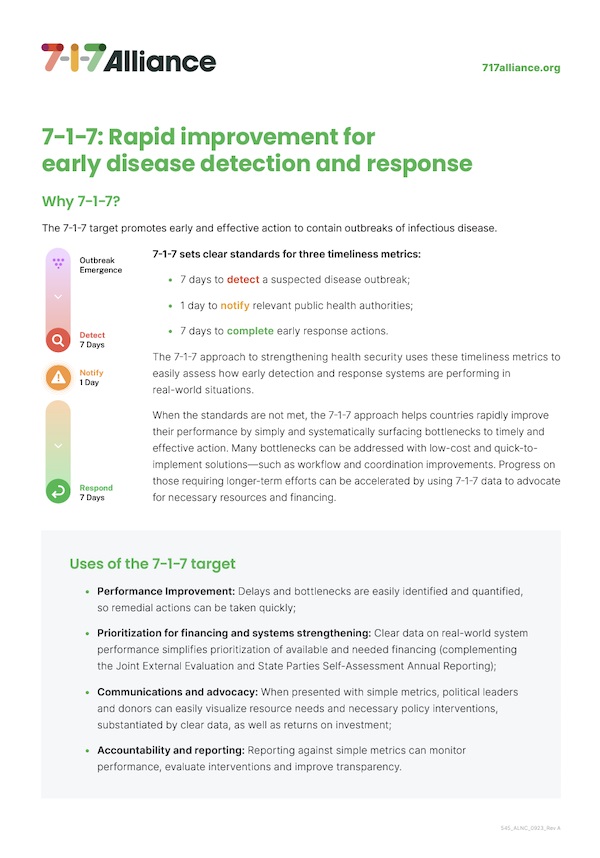
Introductory brief on the 7-1-7 target, its uses, and how it complements existing tools and assessments.
7-1-7 for Accountability, Monitoring and Evaluation
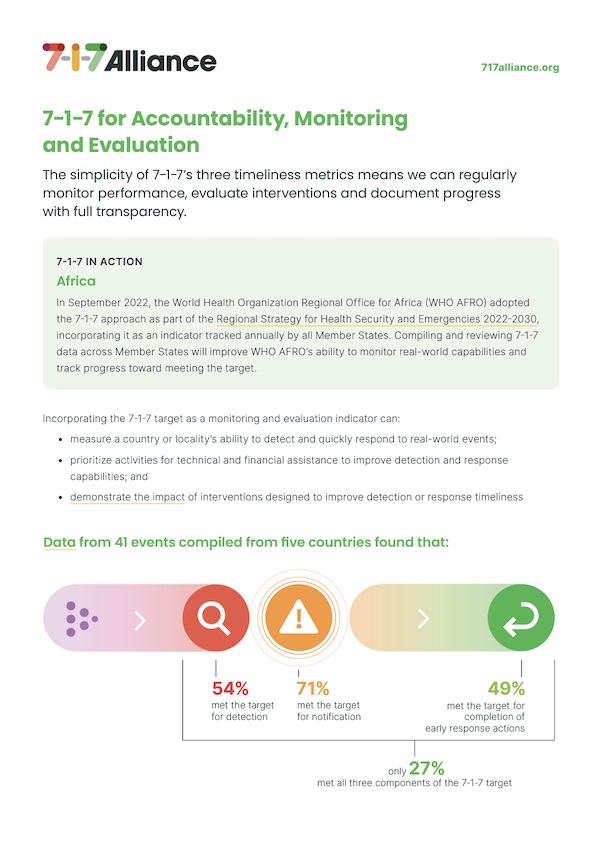
The simplicity of 7-1-7’s timeliness metrics helps monitor performance, evaluate interventions and document progress with full transparency.
Advocacy as easy as 7-1-7
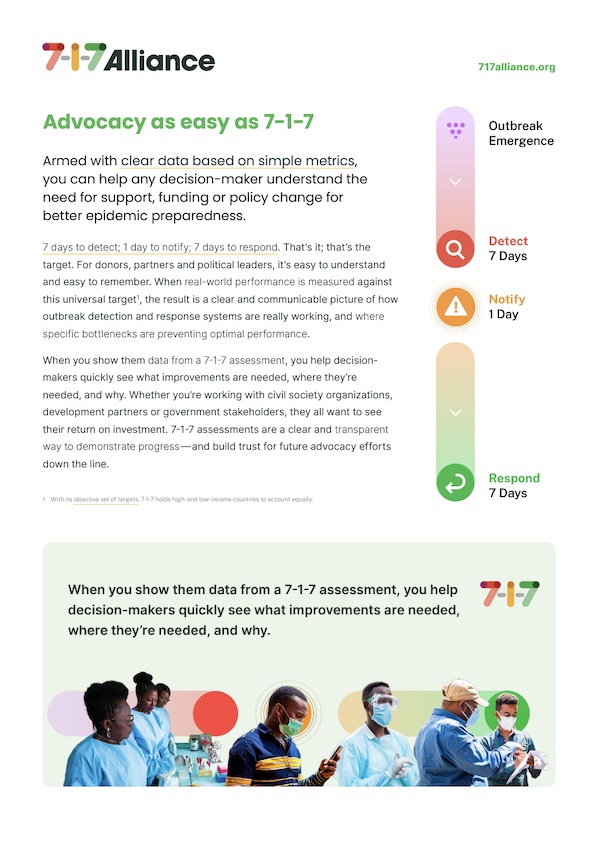
Clear data based on simple metrics can help any decision-maker understand the need for support, funding or policy change for better epidemic preparedness.
Continuous improvement with 7-1-7
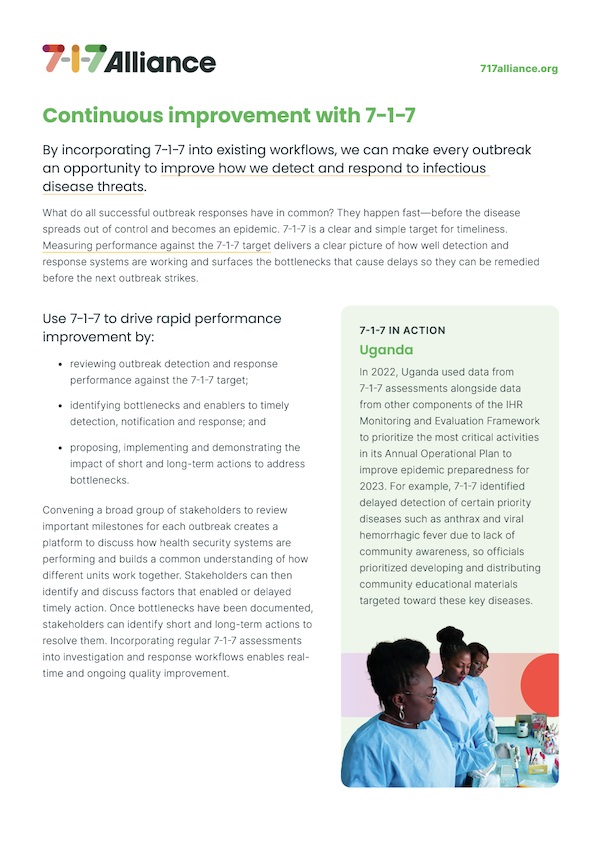
By incorporating 7-1-7 into existing workflows, we can make every outbreak an opportunity to improve how we detect and respond to infectious disease threats.
Why 7-1-7? The evidence behind the global target for containing epidemic threat

Overview of the 7-1-7 evidence base.
Overview of the 7-1-7 Alliance
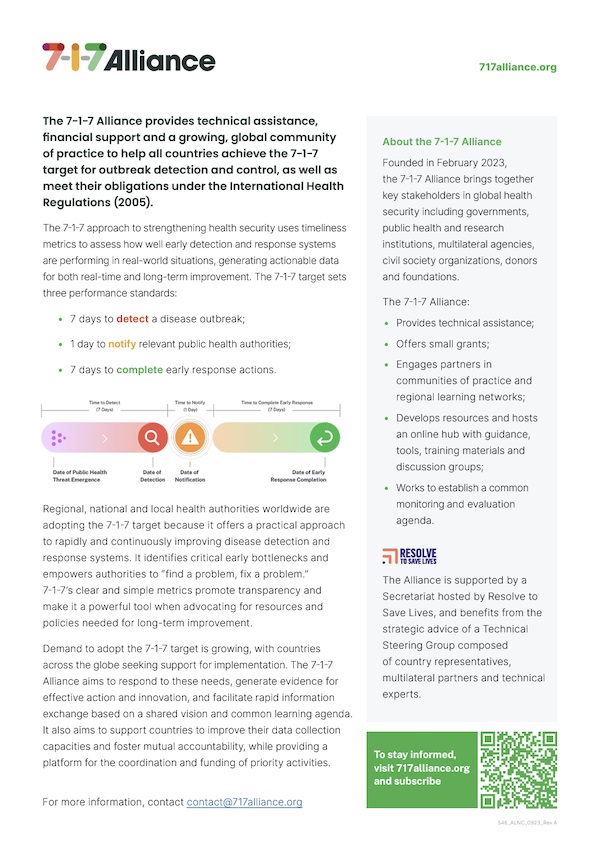
Introductory brief on the7-1-7 Alliance, the 7-1-7 target, and the Alliance missions.
Digital toolkit
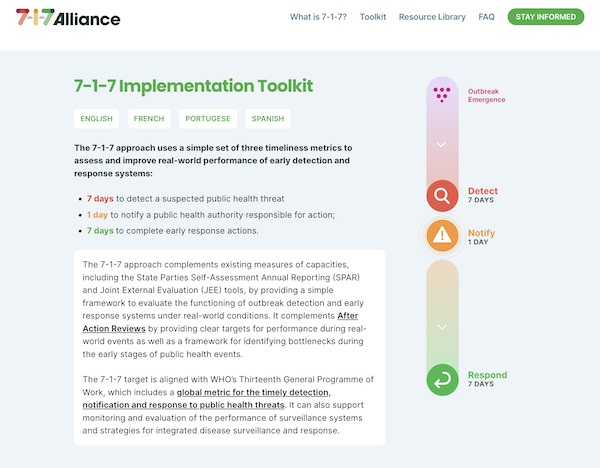
Step-by-step guidance and tools to start putting 7-1-7 to work, in one place.
“Surveillance is a public health superpower”

In an essay for the Financial Times, Dr. Tom Frieden explains how disease surveillance helps us foretell health disasters and see trends in diseases and health programs to save lives.
Protéger le Personnel de Santé: Il est Urgent D’agir
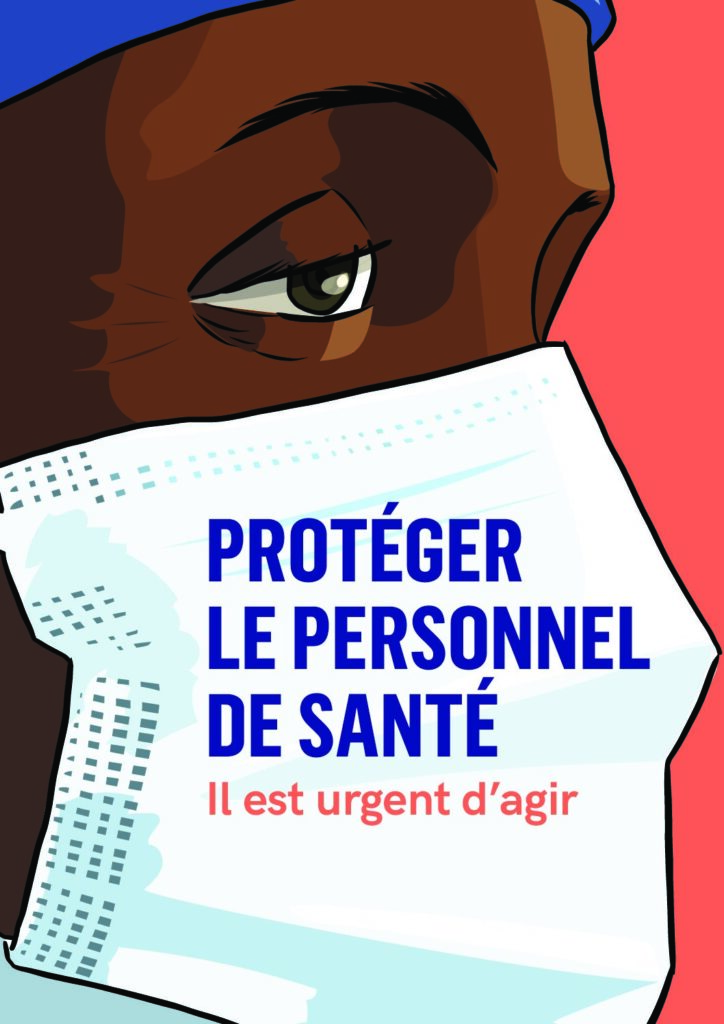
Dossier d’information sur la protection du personnel de santé pendant les épidémies.
PMEP Application

Zip file with PMEP application details and documents.
Rapid Outbreak Financing to Prevent Epidemics
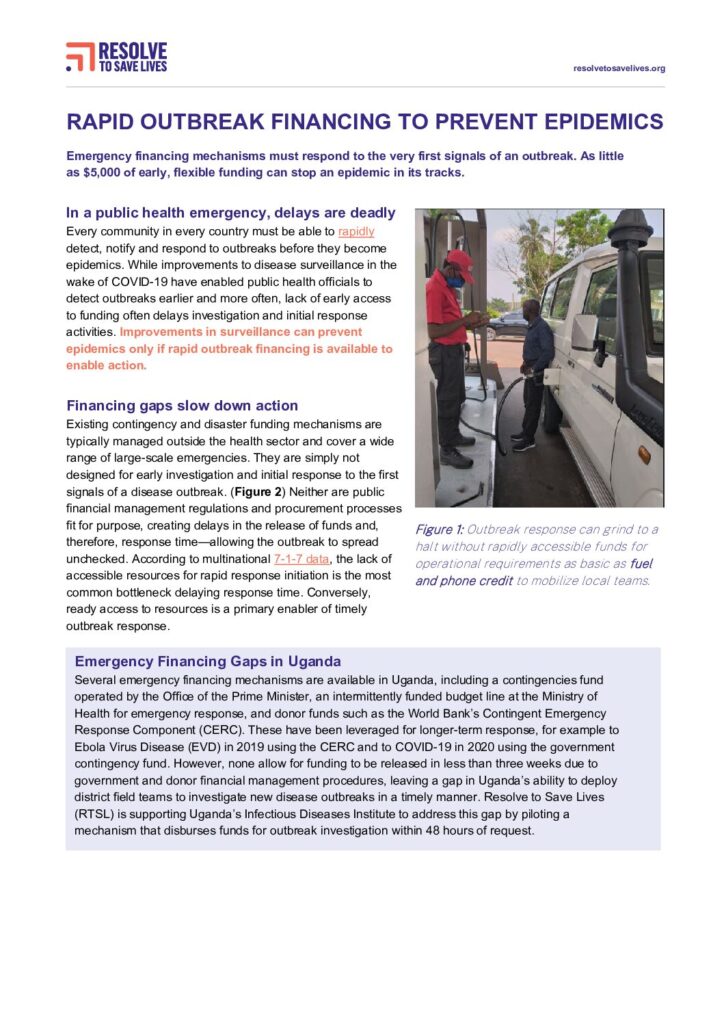
An overview of how rapid outbreak financing are crucial to preventing epidemics.
Program Management for Epidemic Preparedness
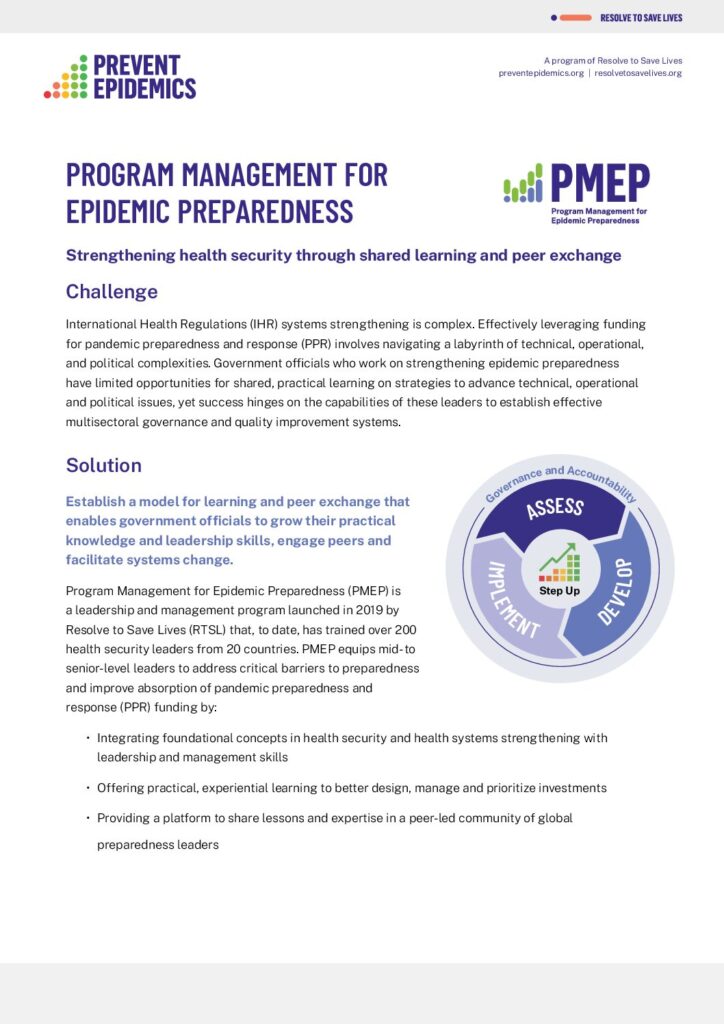
An overview of program management for epidemic preparedness and how to strengthen health security through shared learning and peer exchange.
PERC Briefing on Economic Burden of COVID-19
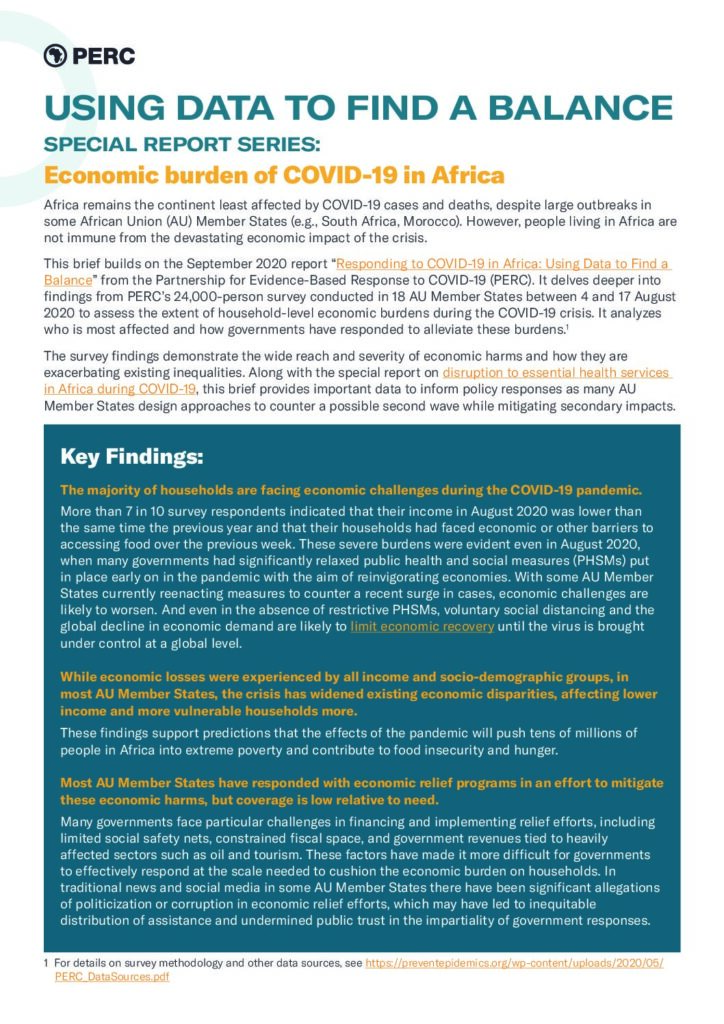
A brief from PERC’s 24,000-person survey conducted in 18 African Union (AU) Member States in August 2020 to assess the household-level economic burden of COVID-19.
Prévention des Épidémies Ce que les Communautés, les Pays et le Monde Peuvent Faire Pour Progresser
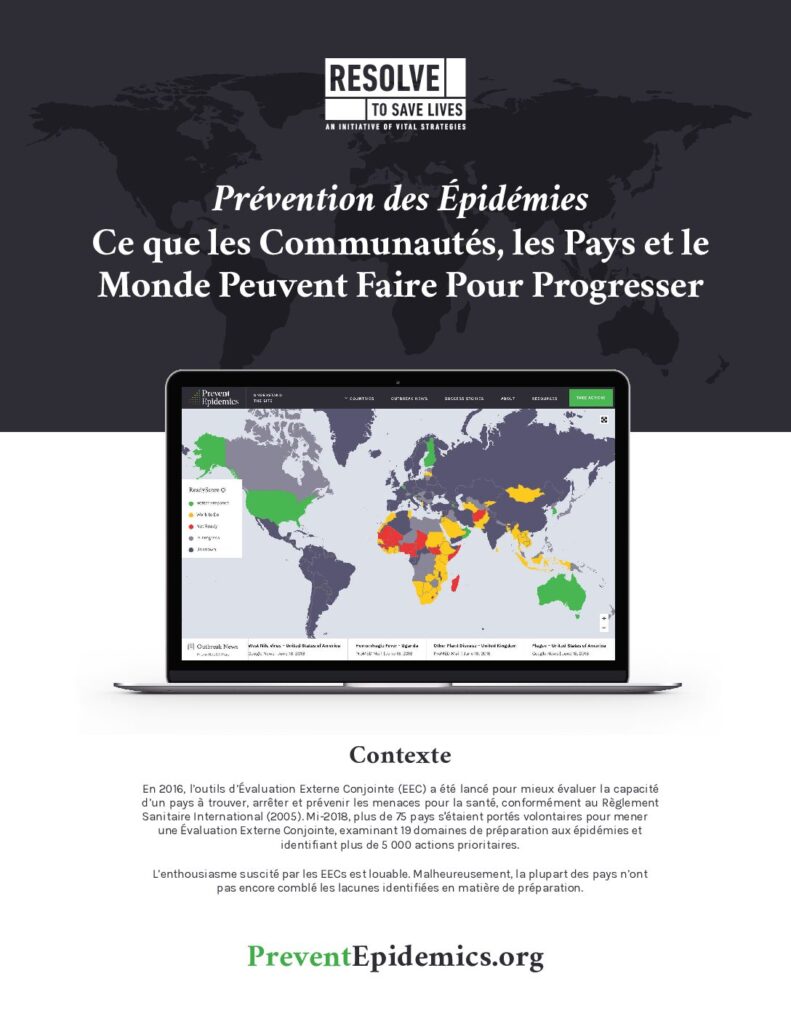
Fiche d’information sur les actions clés pour faire progresser la prévention des épidémies.
Prévenir Les Épidémies Comment les Communautés, les Pays et le Monde Peuvent S’impliquer
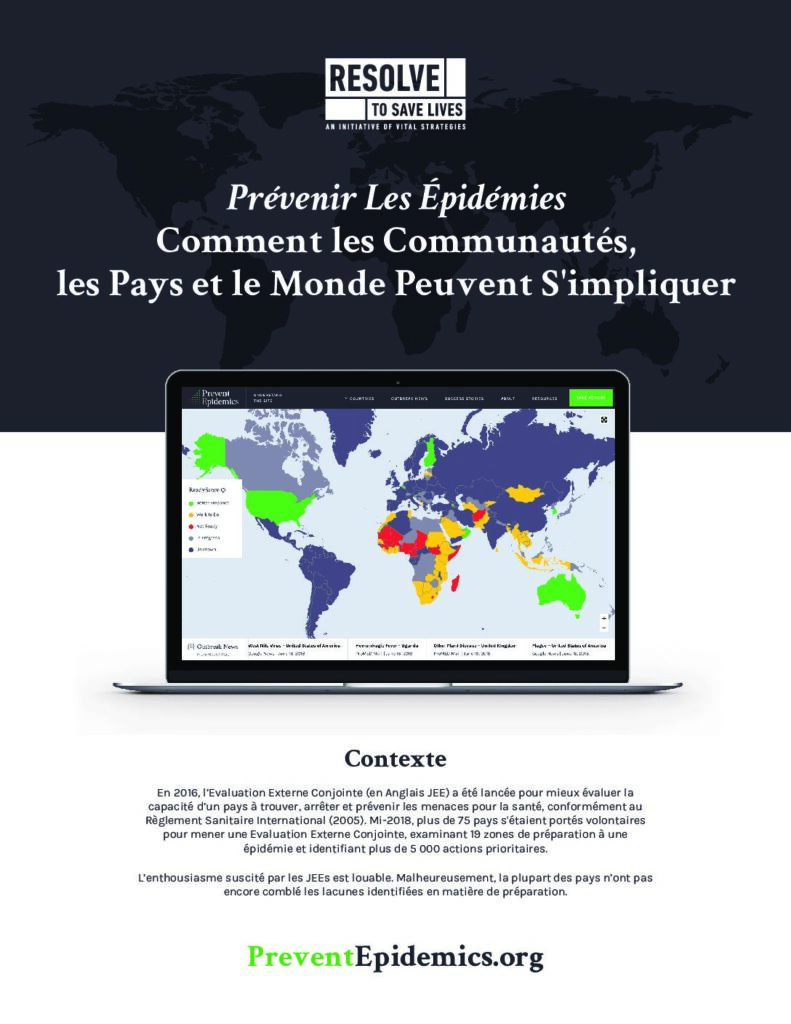
Fiche d’information sur les actions clés pour prévenir les épidémies.
Considérations Liées au Développement d’un Institut National de Santé Publique (INSP)
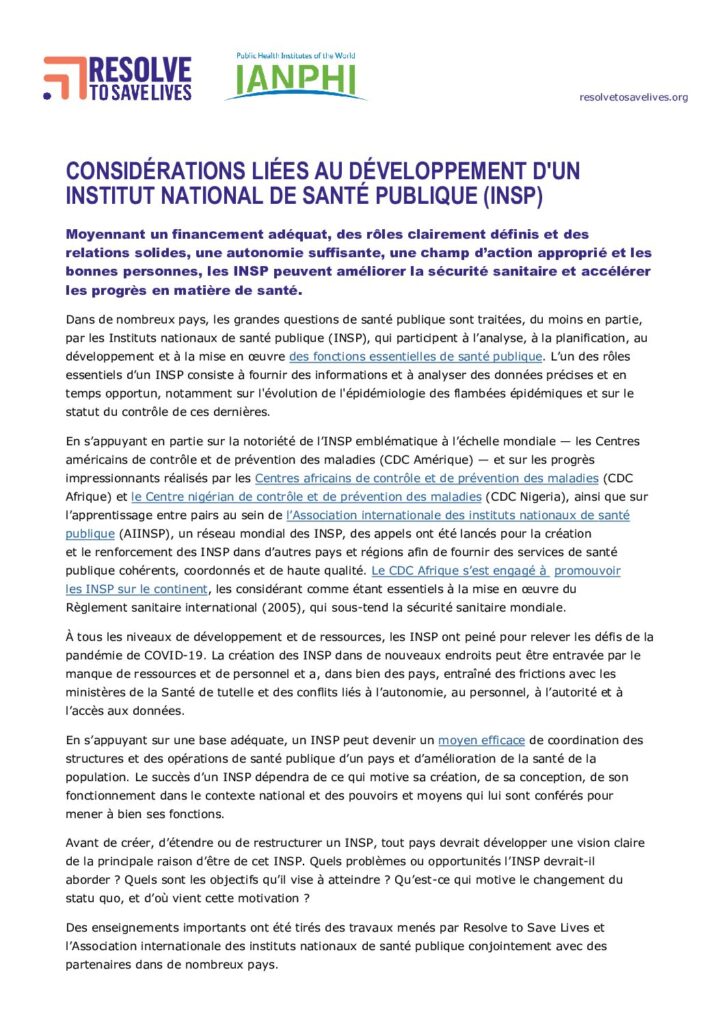
Ensiegnements et recommandations tirés des travaux menés par Resolve to Save Lives et l’Association internationale des instituts nationaux de santé publique conjointement avec des partenaires dans de nombreux pays.
How ready is your country for the next epidemic?

Guidance on identifying your country’s readiness score for country-level epidemic preparedness.
Letter to Congressional Leaders
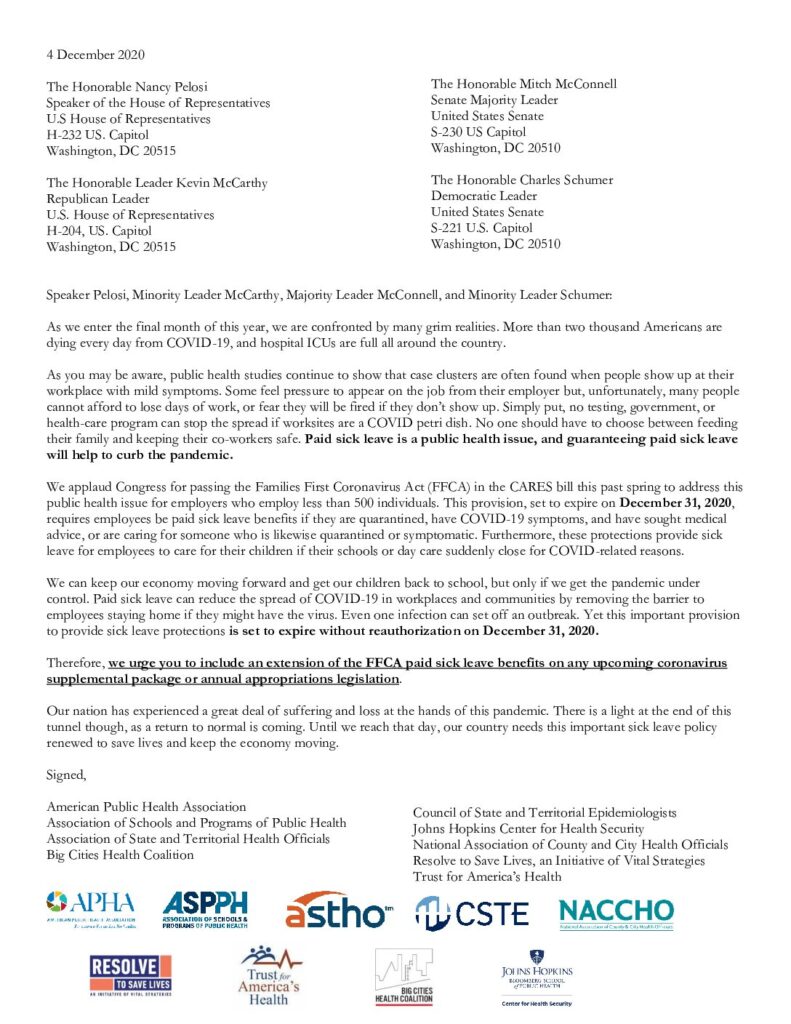
A letter to US congressional leaders urging the extension of paid sick leave benefits during the COVID-19 pandemic.
Developing the 2024 National Action Plan for Health Security (NAPHS) Annual Operational Plan (AOP)
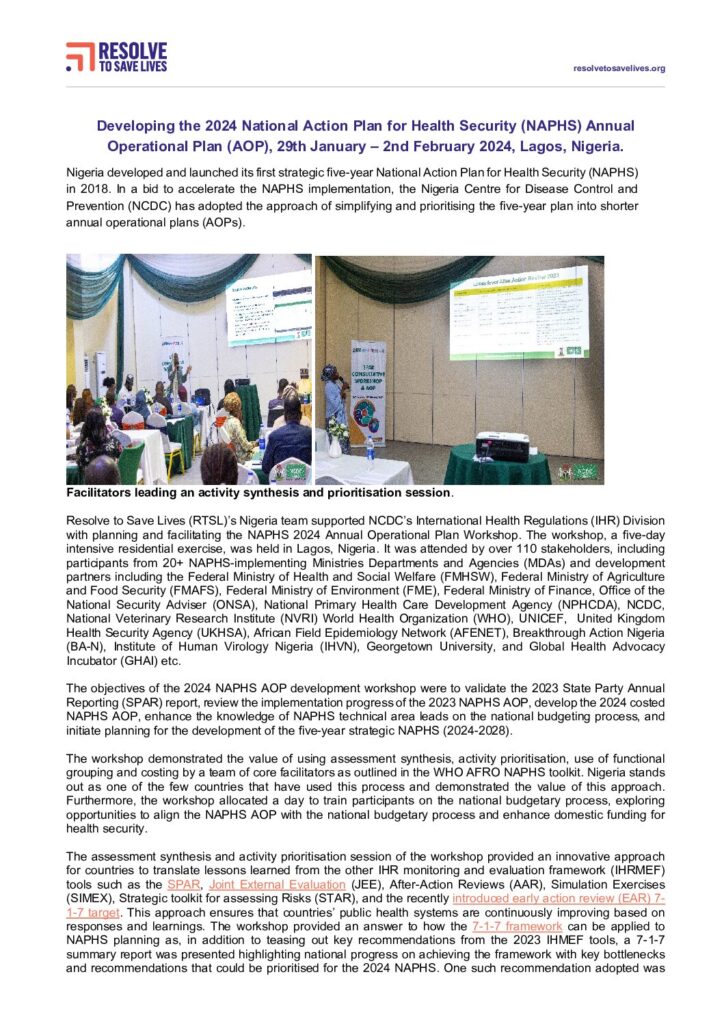
An overview of the process of developing the 2024 National Action Plan for Health Security Annual Operational Plan in Nigeria.
NAPHS Tracker
“An overview of how the National Action Plan for Health Security (NAPHS) Tracker enables data-informed decision-making to streamline NAPHS management and financing.”
Operational Planning and Priority-Setting Using 7-1-7 to Strengthen Uganda’s Health Security

A case study on how the 7-1-7 approach bolstered Uganda’s National Action Plan for Health Security (NAPHS).
Joint External Evaluation Overview

An overview of the Joint External Evaluation (JEE).
International Health Regulations (2005) Core Capacities
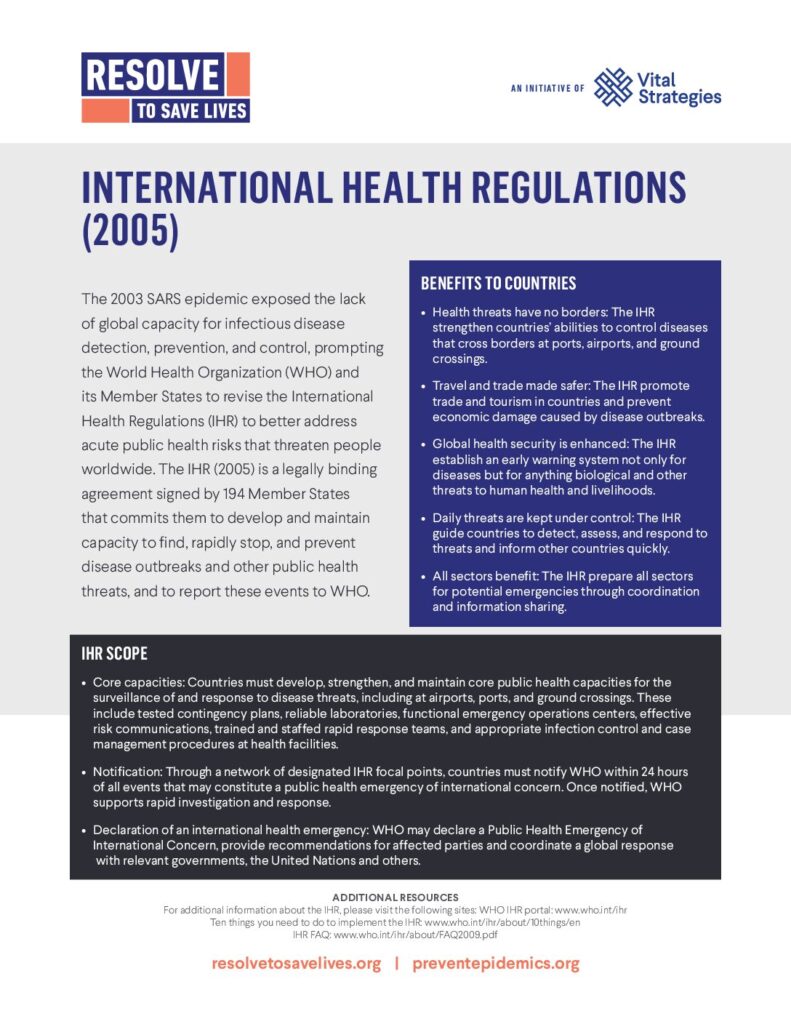
This document outlines the International Health Regulations and the core capacities countries must develop to detect, prevent, and respond to public health threats, including infectious diseases.
$113 Billion Can Prepare Low- and Middle-Income Countries to Prevent and Respond to Epidemics
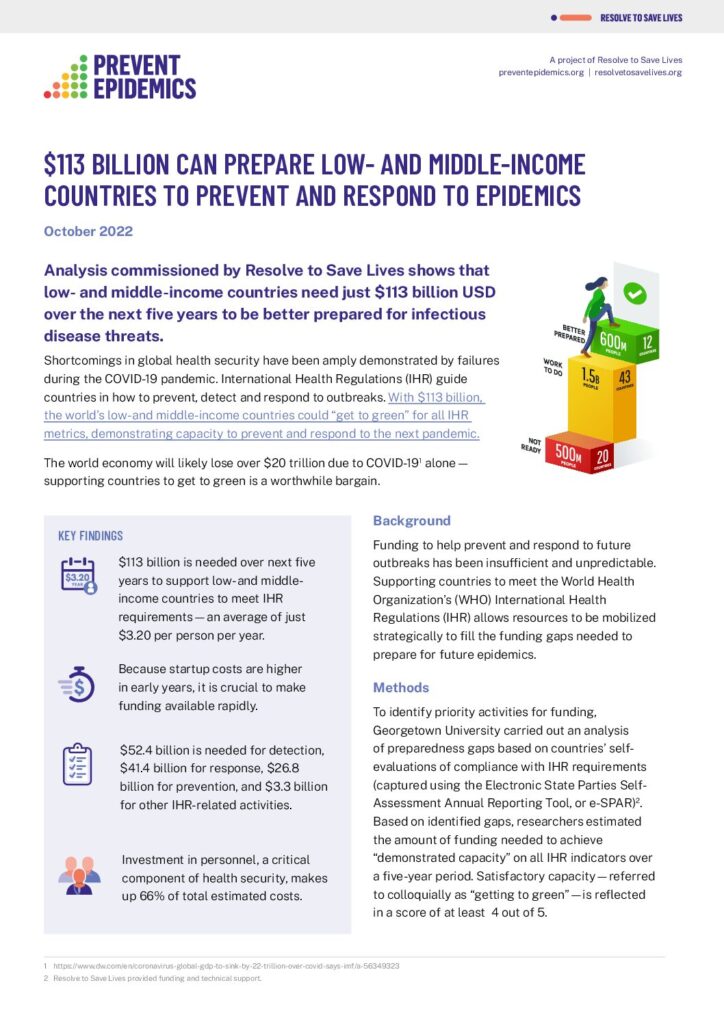
Analysis commissioned by Resolve to Save Lives shows that low- and middle-income countries need just $113 billion USD over the next five years to be better prepared for infectious disease threats.